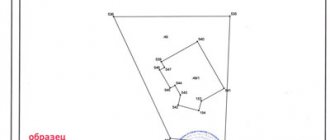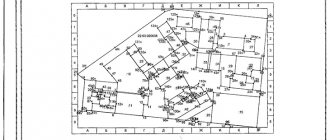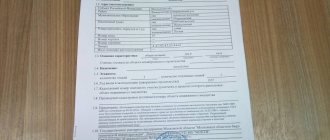SNT is an abbreviation that stands for “garden non-profit partnership.” The organization allocates land plots (LPs) for economic or gardening activities. Like any other piece of real estate, such land must be registered with the cadastral authority, indicating the boundaries and buildings located on the site. Is it necessary to register such land plots? How to put SNT on cadastral registration, and what papers will be required to solve this problem? We will consider these and other questions below.
The need to register SNT in possession
The delineation of plots intended for general use is carried out to separate nearby plots of land. Work is also carried out in situations where a specific citizen owns the land. But in such a situation, a key condition must be met - access to the property used.
As for the need to register SNT in 2020, there is no clear answer. The laws of the Russian Federation do not contain a requirement stipulating the need to register such objects for cadastral registration. As a rule, the relevance of the design is determined individually after studying the characteristics of the site and the current situation.
If a person has papers in his hands that meet the requirements of the law, the lack of a cadastral passport is not a problem. But if you have free time, it is recommended to go through the necessary set of measures and obtain documentation that is relevant in 2020. If SNT is registered with the cadastral register, many difficulties can be avoided in the future, including with neighbors on the plot.
In most cases, the decision to re-register documentation is made at a general meeting of SNT participants. It is worth noting that in 2018, registration of collective joint property is not available. If a collective decision is made to register common lands in the possession of a legal entity, gardeners lose their existing shares and transfer them to the disposal of the new owner.
See also: Procedure for connecting to the water supply and sewerage system - instructions, documents
It is worth highlighting separately what collective joint property is. The current Federal Law No. 66 (Article 28) indicates one feature. All plots of land classified as general use must be transferred to the ownership of SNT without making a payment.
What to consider?
The process of registration of SNT begins with cadastral registration with government authorities. As soon as KV1 (special form) is in hand, work on land surveying is allowed. When implementing such activities, it is important to determine the attitude of other participants to the process.
The key point is the absence of controversial situations regarding the boundaries of SNT lands. In this case, a mandatory stage is a cadastral survey, after which an approval act is made. The document indicates the boundaries of the site and contains the signatures of the neighbors. The presence of a discrepancy between the actual boundaries of the site and the data from the general plan can lead to a number of problems in the future. In this case, the return of the memory is possible in two ways. The first is negotiations with people who illegally seized a piece of land. The second is radical and involves protecting interests through the courts.
How to register SNT for cadastral registration?
Now let's look at the issue regarding the registration of land plots. Before registering an unregistered plot of land for cadastral registration, it is worth preparing the following information:
- Schematic representation of the land plot taking into account the land surveying. The owners and plots that will be used jointly in the future are also indicated here.
- Information, confirmation of the possibility of using land plots. Here we are talking about papers for the use and provision of such sites.
- Information from the constituent documents of SNT.
The collected documentation is transferred to local authorities, and after surveying, a land management plan is drawn up. It indicates areas that are privately owned and classified as lands of joint use.
The rules for SNT indicate that individual privatization is allowed. At the same time, the transfer to personal or shared use of some objects is prohibited. For example, if SNT participants spent money on restoring a road, registration of shared ownership of the object is impossible. This is because it is already mentioned in the documentation.
See also: Current issues in the construction industry
How to register an individual housing construction project under the “dacha amnesty” in the Moscow region until 2020
The head of the URVISTA company, Alexey Petropolsky, notes that, compared to the previous wave of “dacha amnesty,” the current version is noticeably different. Now you can register a house as a non-residential building without a building permit and commissioning. In any case, you need:
Deadlines
The procedure for legalizing a dacha building involves conducting cadastral registration by contacting a cadastral engineer to prepare a technical plan for the building of the property and submitting it to the registering authority. Registration of rights is possible only if the cadastral registration of the object has been completed.
- GPZU (master plan of land) is issued free of charge. The service is completed within 20 working days, but a topographic survey of the site may be required (This will take another 10 working days and will cost approximately 22,000 rubles in the Moscow region) - in Moscow the application is submitted online through mos.ru, in the region through the MFC or through the portal public services of the Moscow region;
- SPOZU (site planning diagram), you can do it yourself or order it from a geodetic company (costs 8,000 rubles, completed in 2 business days).
Important! A necessary condition for the installation of buildings is the land plot on which the buildings are located that has been previously registered in the cadastre. If the land is not registered, first submit documents for the land, register the land plot, and only then can you submit documents for the house.
Technical plan
The dacha amnesty simplifies the paperwork procedure. What does it mean? When the amnesty expires, registering the building will require not only the provision of a technical plan, but also permission to put it into operation.
- document of title (order of an authority, certificate of inheritance rights issued by a notary, purchase and sale agreement, deed, agreement, certificate, extract from the household ledger, etc.);
- so that the purpose of the site is for personal subsidiary farming, dacha farming, vegetable gardening, gardening, individual garage or individual housing construction;
- application (can be submitted by both the person to whom the land was given and his heir).
This is true. As we told you, now summer residents have only two types of plots left: SNT and ONT (gardening non-profit partnerships and gardening non-profit partnerships). Vegetable garden plots are intended for vegetable gardens. It is impossible to build anything larger than a greenhouse there. On garden plots you can build full-fledged houses for year-round living.
What has changed in the registration of land plots allocated before October 30, 2001?
Until the end of 2020, houses on garden plots could be registered very simply: all that was needed was a title document for the land and an application. Since the beginning of 2020, Federal Law No. 218 “On Real Estate Registration” requires the mandatory presentation of a technical plan of the house.
- Dacha amnesty refers to several different provisions of the law. This is not one document, and everything is complicated.
- Land plots allocated on any basis before October 30, 2001 can be registered as ownership upon application and a document of rights. This is indefinite, nothing has changed.
- After August 4, 2020, new houses are built without permission, but by notification. The law was adopted a year ago, and it has not changed either.
- If the house began to be built before this date, it can be legalized by notification, without a permit for construction and commissioning. That is, if you began to build a house without permission, then it can be legalized without a trial. This order was extended until March 1, 2021 and is now called another dacha amnesty.
- Houses on garden plots that are not registered as property can be legalized without notification - according to the technical plan and declaration. But only until March 1, 2021. This is also a dacha amnesty, but it has its own nuances. Details are in the article.
- Notifications are not required for garages and outbuildings. They are drawn up according to the declaration and technical plan. It was like that before.
- The state fee for registering an amnesty property is 350 rubles. The cost of cadastral registration and technical plan is several thousand.
We recommend reading: Bailiffs Found the Debtor and Brought to Court
The procedure for registering SNT for cadastral registration - documents where to apply
To register SNT, you will need the following papers:
- Applicant's passport.
- Extracts from the cadastral authority.
- Documentation indicating that a person owns a plot of land in SNT. Such paper can be an extract from the book of the gardening society.
- Application (drawn up by the person who applies for registration).
- A check indicating payment of the state duty in full.
To put SNT on the cadastral register, you will need to survey the territory, after which registration in the cadastre is carried out. Land surveying issues are dealt with by a cadastral engineer who comes to the land plot after completing the necessary procedures. The result of his work is a technical plan indicating the storage limits.
Having the mentioned document in hand allows you to begin registration procedures. When submitting the application, you must have your passport and payment receipt on hand. The entire process of registering SNT for cadastral registration takes about 30 days.
Where to go?
A number of changes have been made to the Land Code of the Russian Federation, according to which the registration of dacha or other land plots is carried out without reference to a specific part of the country. It does not matter to the authorized bodies where exactly the plot is located. For example, the land may be near Perm, but it is allowed to register it even in Moscow.
In 2020, the following options for cadastral registration are highlighted:
- Through Rosreestr. When choosing this path, it is recommended to come to the authorized body in person or send a representative (there must be a notarized power of attorney). A complete package of papers is submitted to the authorized body (submitted against receipt). The registration structure will be allocated at least five days to review the documentation.
- Through MFC. In the process of receiving documentation from the client, the MFC employee also issues a receipt. Otherwise, the process is no different from what is discussed above. The downside is that the registration will take 2-3 days longer due to the need to transfer papers from the MFC to Rosreestr.
Procedure
To speed up the process and register an unregistered SNT plot with cadastral registration the first time, you should adhere to the following algorithm:
- We collect the papers discussed above and go with them to the cadastre authority (Rosreestr). We fill out an application with a request to register SNT.
- We pay the state fee at the cash desk on the territory of the institution. It is important to note that the amount of payments for ordinary citizens (individuals) and companies differs slightly.
- After paying the state fee, we hand over the check and other papers to the employee of the institution and take a receipt. The paper, as a rule, indicates the day the passport is issued for the loan. If there are no errors in the submitted documentation, registration takes up to 20 business days. In other situations, delays may occur.
- We take away the finished document confirming the fact of registration of SNT. Papers submitted for the registration process will not be returned.
See also: What is the civil liability of the developer?
Technical plan of a country house for cadastral registration in 2020-2020
The conditional name “Dacha Amnesty” was assigned to No. 93-FZ, which provided the population with the opportunity to simplify the registration of property rights in relation to certain categories of real estate. The Federal Law came into effect in 2006. The document reflected a simplified scheme for the legalization of dacha lands, without the participation of the applicant in numerous bureaucratic delays. It was enough for landowners to go to any representative office of Rosreestr to submit a personal passport and a cadastral plan of the area. Included with the listed files could be any paper indicating the legality of the applicant's application for land ownership. Initially, legislators did not limit the duration of the innovation. Not long ago it became known that the Federal Law will remain relevant until March 2020. This will only affect the legalization of property rights to land ownership and individual residential buildings.
What is needed to create technical plans?
For any separate capital building, a personal technical plan is formed in order to subsequently register the property with the State Property Committee. The application may be in digital format or provided in a printed version. The content of the technical plan includes graphic and text sections. Graphic applications are excerpts of information from the cadastral plan of the territory, which schematically shows the location of each of the buildings. Schematic representation of buildings is carried out by a cadastral engineer, who previously carries out topographic surveys of the area.
Also, until March 1, 2020, the validity period of the “dacha amnesty” has been extended for already constructed individual housing construction projects, that is, detached residential buildings with no more than 3 floors, intended for single-family residence.
We recommend reading: Novomoskovsk Tul About Benefits for Pensioners
Tax on SNT in 2020
Taxation issues concern all members of SNT. There are often cases when the tax is distributed equally among everyone, and benefits are not taken into account. To determine the nuances of transferring payments, it is necessary to study the papers confirming ownership. If specific citizens are identified among the owners, the burden of taxes is equally distributed among them. In the absence of such information, payments are made by the partnership.
When calculating fees, data from title documents is taken into account. If the land plot does not have a cadastral passport, and the plot itself is not registered, the amount of payments is determined taking into account the general regulations in force in the region.






